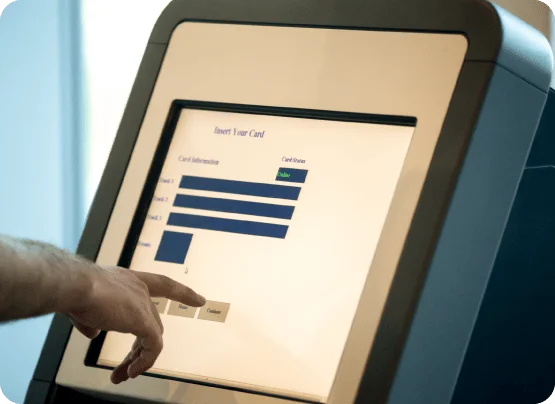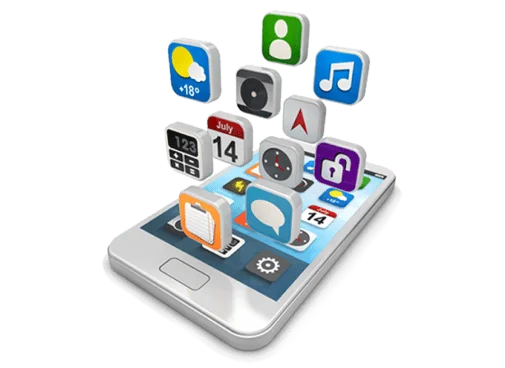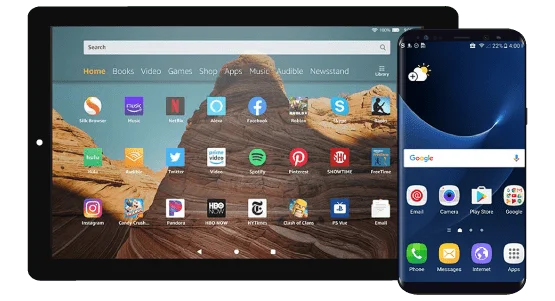Android Kiosk Mode Made Easy
VantageMDM Kiosk mode feature supports all Android Smartphones & Tablets. It can restrict access to apps and websites to ensure full control of how people use your devices. This way you can use Android devices to offer better self-service, create more engaging and focused training environments and increase customer engagement.


Single & Multi App Kiosk Modes
VantageMDM supports both Single App and Multi App Kiosk modes. Single App Kiosk Mode locks devices for a single app use, ideal for dedicated business use. In single use mode, you can block notifications, navigation, app trays and hardware keys so the device runs exclusively for your business.
In Multi App Kiosk Mode, you can allow two or more apps to run while blocking the rest; suitable for customer-facing use cases.
Secure your Company’s Device Fleets with VantageMDM
Lock Android devices to business apps and create a safe, secure and more productive device experience with following features.
App Blocking
Prevent device and data misuse by locking devices so they only run your chosen apps.
Track Location
Locate devices remotely for better monitoring. Get real-time details of enrolled devices in Android kiosk mode
Block Factory Reset
Turn off remote factory reset so that devices can’t be misused. Have complete control of devices with VantageMDM.
Web Filtering
Restrict access to specific websites through white lists and black lists of websites. Content Category based filtering is also supported.
Manage WiFi Configurations
Restrict and manage WiFi network, hotspot and data roaming. Have the devices enrolled into the right network just after they’re switched on.
Hardware Restrictions and More!
Prevent screenshots, restrict hardware buttons, camera , bluetooth and much more! Ensure compliance with your in-house, remote or hybrid workforce.
Why use Kiosk Mode for Android?
Effortlessly Transform Android Tablets and Smartphones into Kiosk
VantageMDM’s Android kiosk mode empowers IT admins to transform Android devices into kiosks. Enforcing only selected applications, URLs, and customizations, making devices to be utilized for dedicated purposes.
Turn any Android Smartphone or Tablet into Kiosk Mode
With our Android kiosk software, reduce IT costs, optimize device management operations, enhance security, and elevate customer experience remotely. Streamline your Android devices with an affordable yet powerful Android kiosk app.
Frequently Asked Questions
What is Android Kiosk Mode?
Android Kiosk Mode is a lock-down mechanism that restricts Android devices to run only specific applications, preventing users from accessing other functions or settings. This mode is ideal for public kiosks, educational tablets, or retail POS systems where users should have limited access.
How do I enable Kiosk Mode on my Android device?
Enroll Android devices in VantageMDM portal, and configure kiosk mode from the policies section.
Can I control multiple devices remotely in Kiosk Mode?
Yes, multiple Android devices in Kiosk Mode can be controlled remotely from VantageMDM's easy-to-use portal. It allows you to push updates, manage apps, and maintain security settings from a central dashboard.
What applications can run in Android Kiosk Mode?
Most applications can run in Kiosk Mode as long as they are designed to operate in full-screen mode without needing frequent system access. All you need to do is select the apps from the Play Store (embedded in our web portal) and publish the apps over the air.
How do I update apps in Kiosk Mode?
Updating apps in Kiosk Mode can typically be done through Android kiosk mode solution. You can schedule and deploy app updates remotely without needing to exit Kiosk Mode.
Is it possible to customize the user interface in Kiosk Mode?
Yes, you can easily customize the user interface, including changing themes, layouts, and sort the apps. This customization helps ensure that the interface meets the specific needs of your business and users.
What security features does VantageMDM's Android Kiosk Mode offer?
Our Kiosk Mode feature enhances security by restricting device operations to specific applications and preventing user access to settings. Additional security features can include data encryption, password-protected settings, and the ability to remotely wipe or lock the device if compromised.
How can I exit Kiosk Mode?
Exiting Kiosk Mode typically requires administrative access. This may involve entering a password or performing specific steps within the kiosk application to disable the mode, ensuring that only authorized personnel can make changes.
What hardware requirements to implement kiosk mode on Android devices?
The hardware requirements depends on the applications you intend to run. Generally, the device should have at least 2 GB of RAM and a modern processor to ensure smooth operation. Adequate storage should also be considered for app data and updates.
Who can benefit from using Android Kiosk Mode?
Android Kiosk Mode is beneficial for various sectors, including retail, where it can serve as a POS system; education, for secure testing environments; healthcare, for patient check-in systems; and public services, for information stations.
